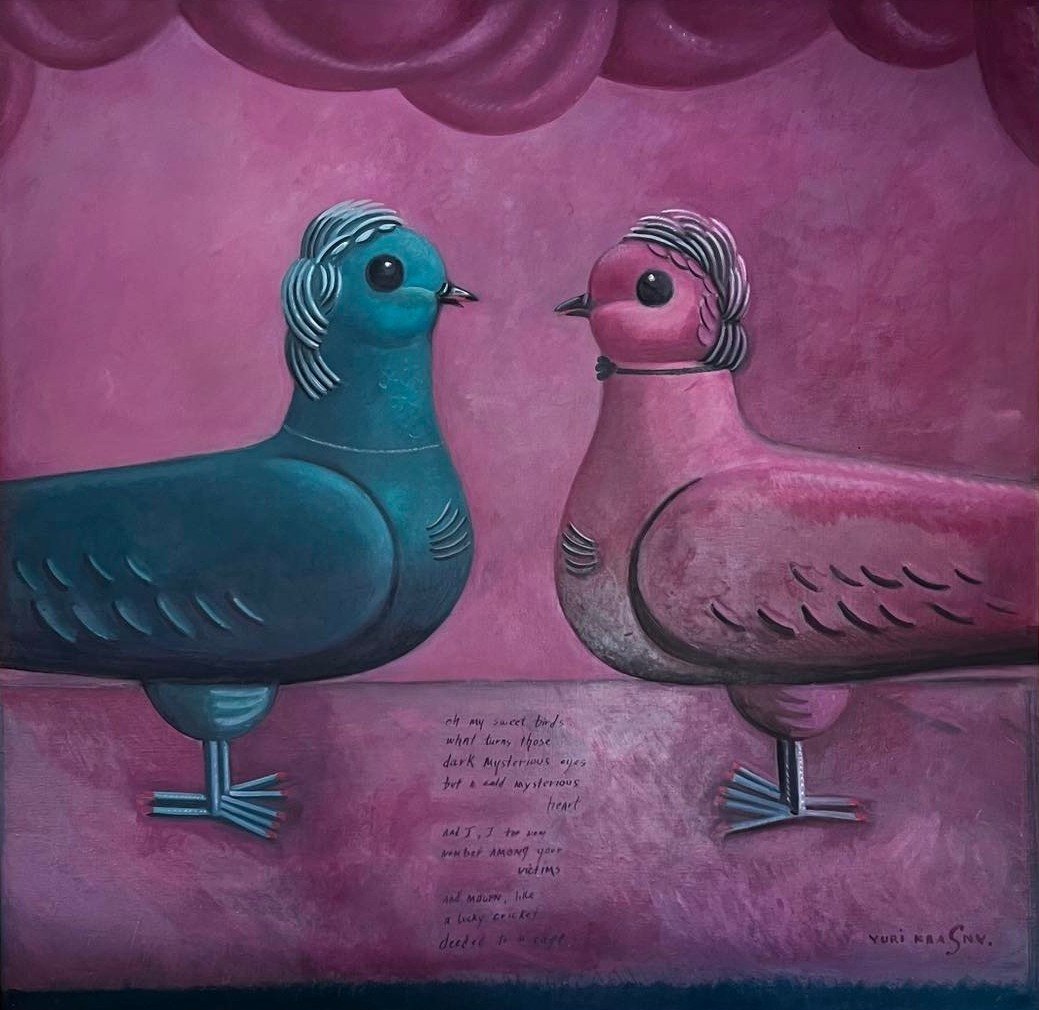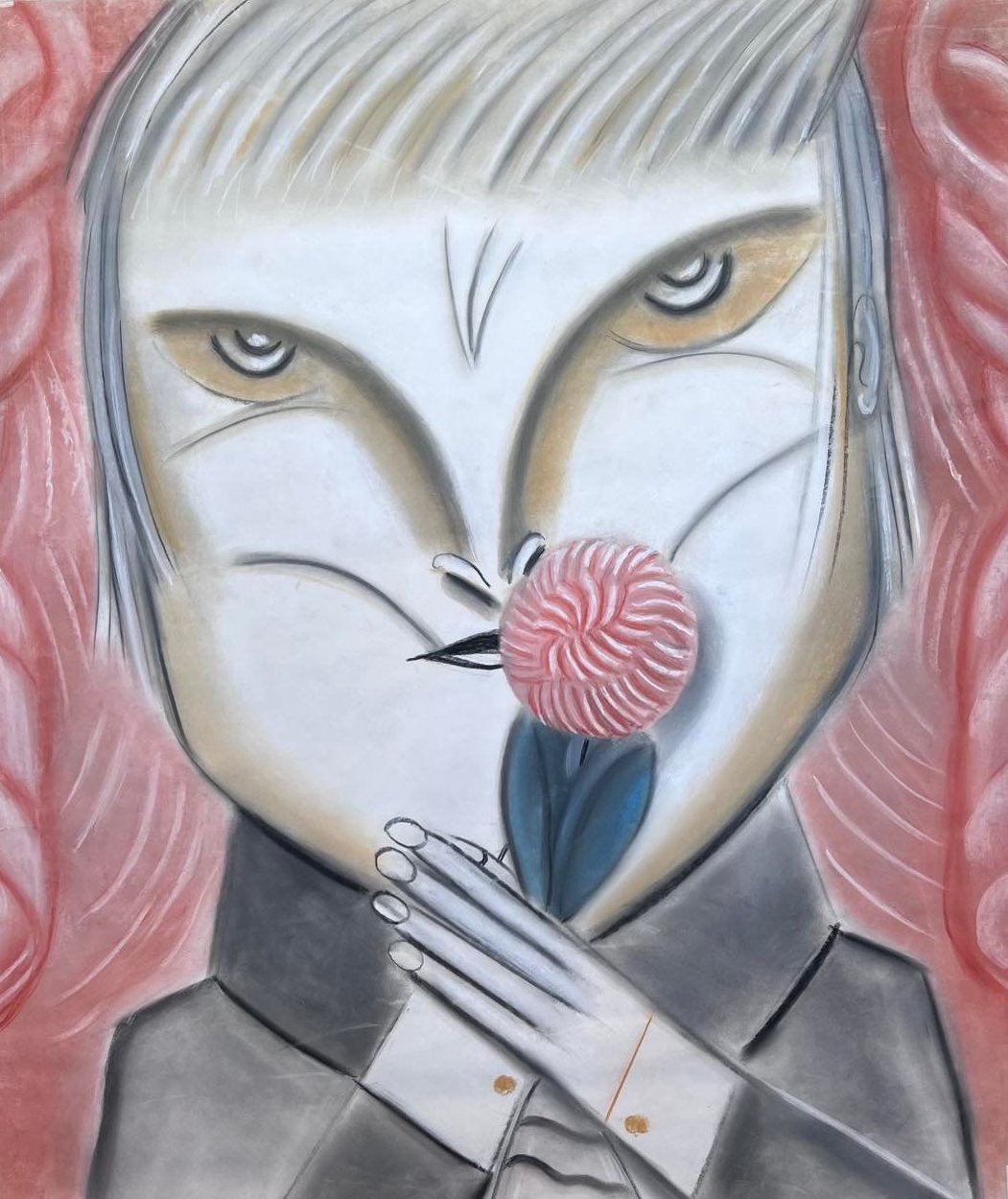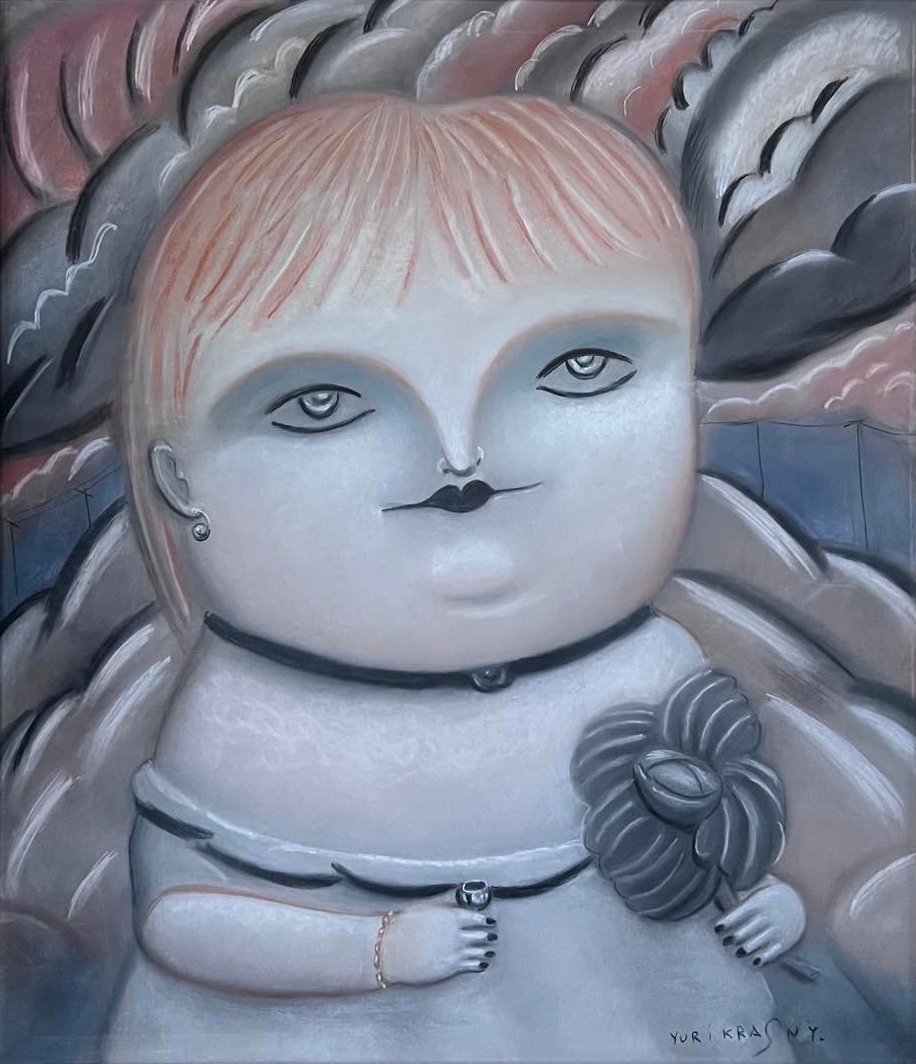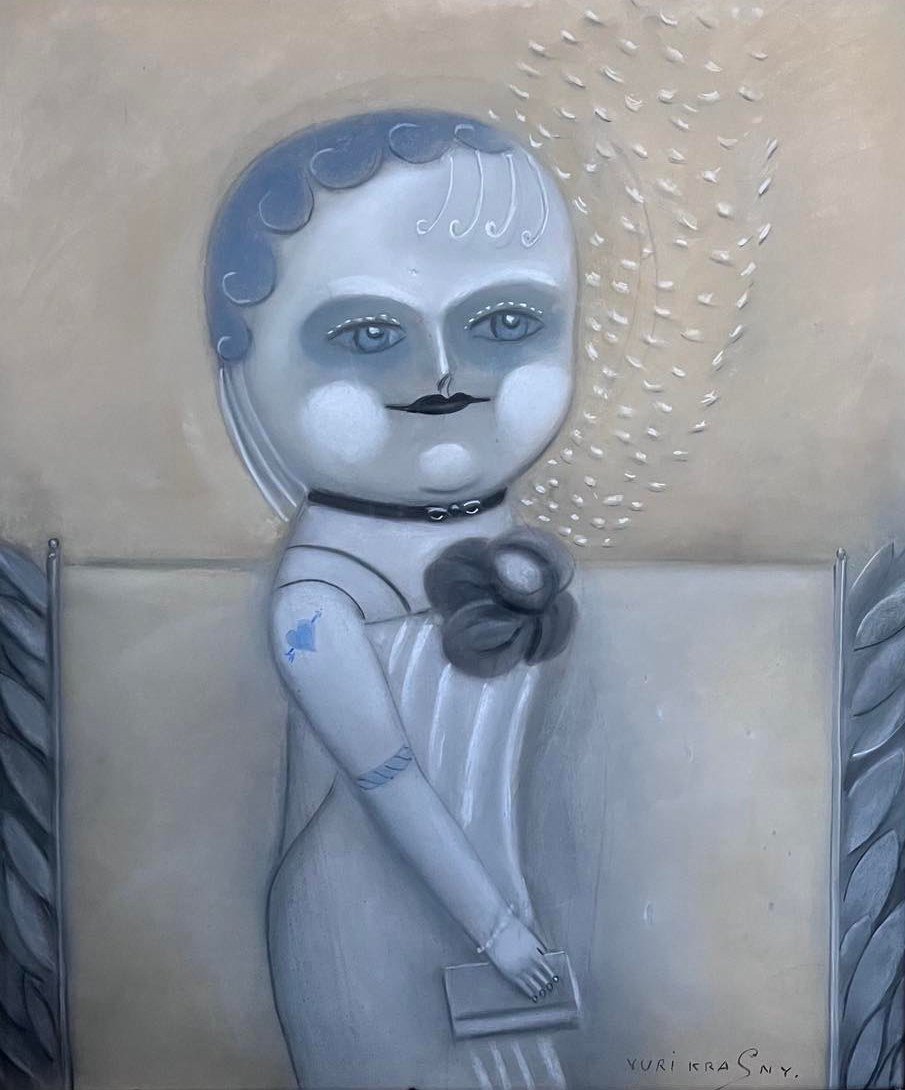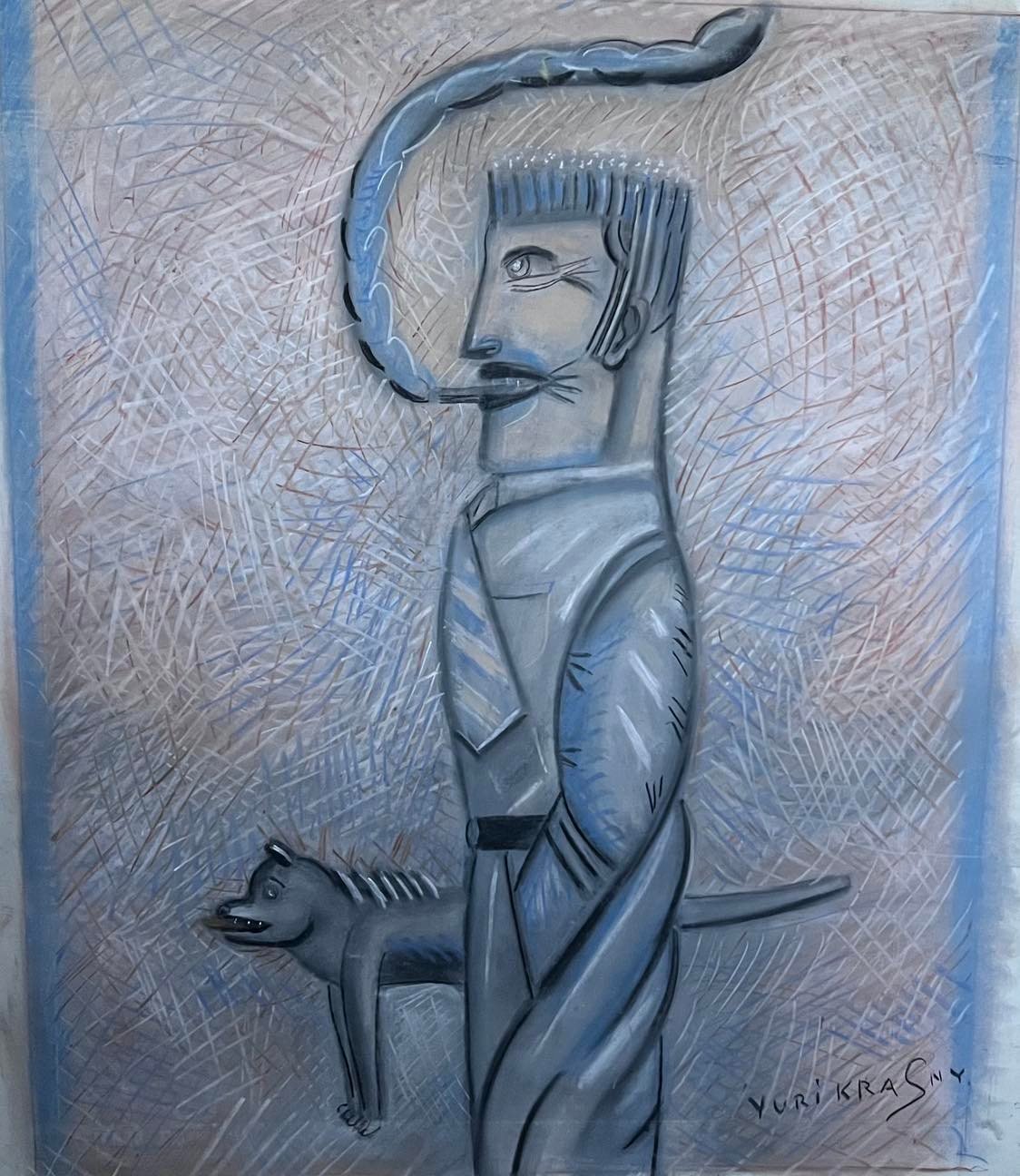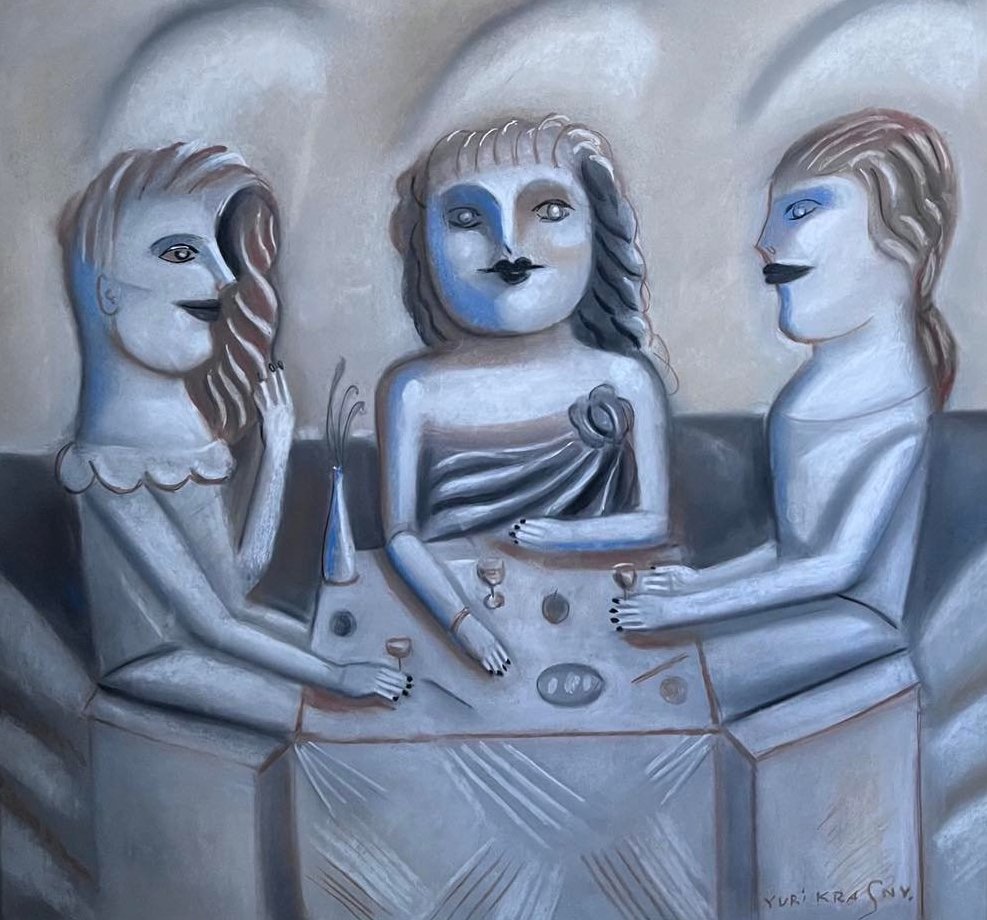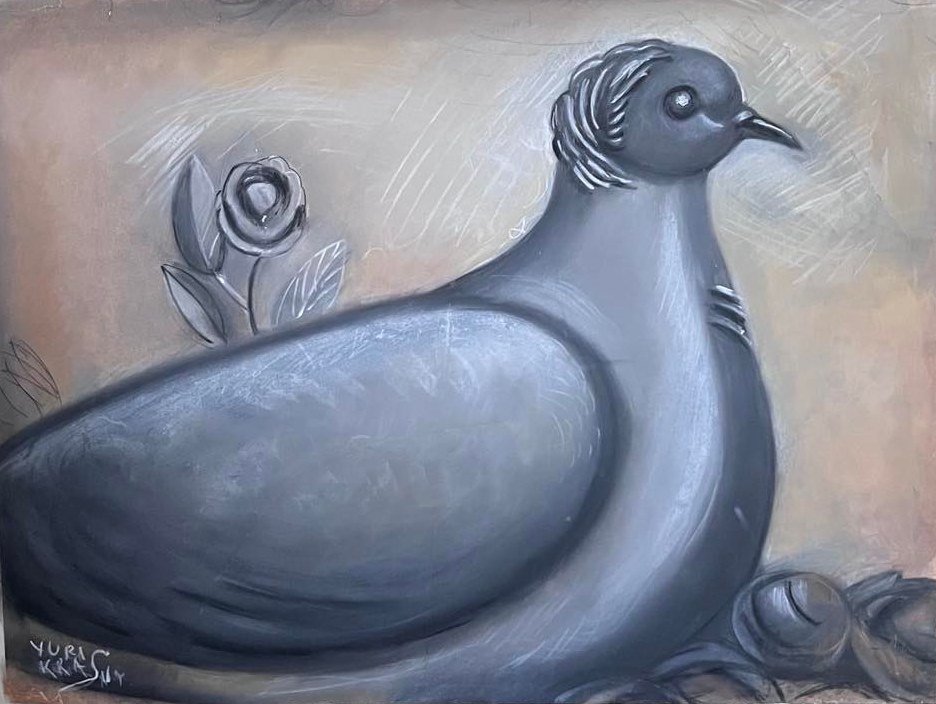SWEET LIFE
Yuri Krasny
ON VIEW
Online: ongoing
In-person: by appointment
“Yuri Krasny is an outsider, an unusual artist, who, at least from today’s point of view, escapes the doubtful categories of official and unofficial. He is a maverick, whose oeuvre defies all attempts at categorization.”
____ Barbara M Thiemann, Peter and Irene Ludwig Foundation
This online presentation features eight unseen works by Yuri Krasny well known for his hypnotic paintings and drawings.
Yuri Krasny (1925-2005 | American, b. Ukraine) lived and worked in New York since his emigration from the Soviet Union in the mid-1970s where he had limited possibilities to exhibit his work, with all the economic implications that entail for artists. Like many of his colleagues who later decided to emigrate, he found employment as an illustrator in the early 1950s and made a name for himself with his unusual drawings and graphic reproductions.
After emigration, Krasny began to move away from graphic art and concentrate on painting further developing his principle of doubling and accenting the sweet life. How do you respond to the sweet life after experiencing the misery of life in the Soviet Union? Krasny’s drawings and paintings offer a possible answer. His pictures depict over-life-size images of people and uneasy scenarios in fascinating colors. The construction of the pictures is very static and the figures are doll-like as a symbolic reminder of what has been left behind: the drab buildings, clothes that offer protection from the cold instead of sexy legs with tattoos in stilettos, no cigarettes, no dandy mustaches above the lips of men who are now well-off and swapped their macho allure for a serious image.
Krasny’s ideas oscillate between morality and amorality, his fantasies link the archaic and reality with eccentricity and excess. There is a parallel here with Krasny’s originally bipolar world. It’s tempting to pigeonhole the works into the proximity of the fairy tale in their naïve aesthetics: timeless and, in spite of their supposed transparency, nevertheless mysterious. His characters defiantly challenge the conventional representation of gender in the arts and gently refuse to conform to the viewers' expectations. There is something slightly uncanny in the posture, appearances, and actions of those characters that animate Krasny’s images. From a formal point of view, Krasny’s pictures suggest that he was very familiar with the history of European art and drew on the early European tradition and artistic principles laid down by Piero della Francesca, Masaccio, or Paolo Uccello. From contemporary painters, Fernando Botero must be added, who, for his part is linked with the great names of the Italian Renaissance. Krasny’s imagery collapses conventional readings of time. The artist blends multiple styles to develop a visual language that becomes his own.
Yuri Krasny’s works are in several notable public and many private collections. Sweet Life is the first posthumous exhibition of the artist’s work after his death in 2005.
